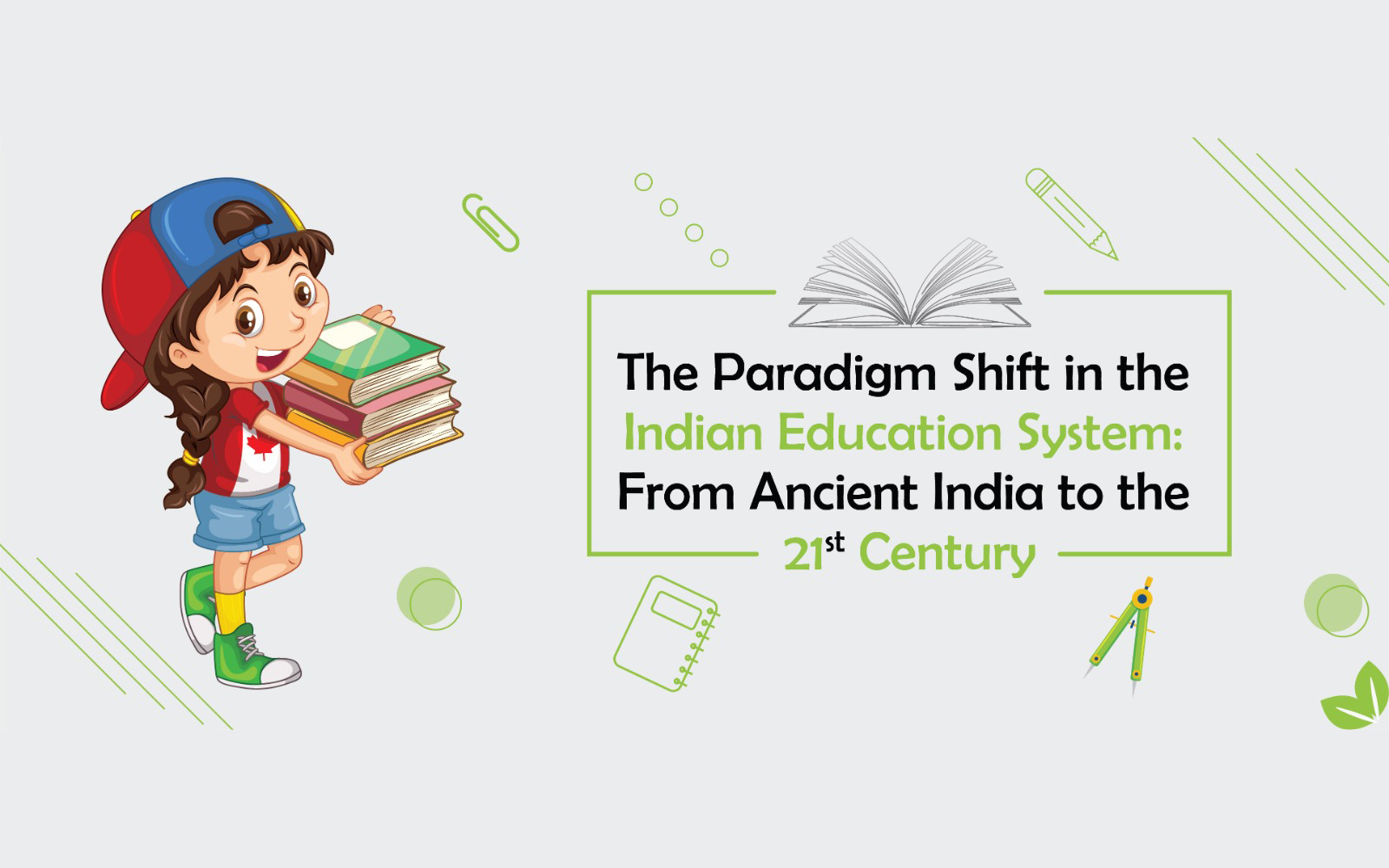The Paradigm Shift in the Indian Education System: From Ancient India to the 21st Century
The Indian education system has undergone a profound transformation over centuries, evolving from ancient India's Gurukul system under the reign of kings to the pre-independence era, the post-independence period, and finally adapting to the demands of the 21st century. This blog explores the significant paradigm shift in the Indian education system, highlighting the pros and cons associated with each phase, and shedding light on the challenges and opportunities that have shaped our educational landscape.
Ancient India: Gurukul System and Royal Patronage (180 words): In ancient India, education primarily took place in Gurukuls, where students lived with their teachers in a close-knit community. The Gurukul system emphasized a holistic approach to education, focusing on moral, intellectual, and physical development. Students received personalized attention and imbibed cultural values from their gurus. The system enjoyed royal patronage, with kings and emperors actively supporting education.The Gurukul system fostered a strong teacher-student relationship, promoting character development, values, and cultural preservation. It provided a well-rounded education that included various subjects, including arts, sciences, and philosophy, but the system had limited access, primarily catering to the upper castes and males. It lacked structured curriculum and standardized assessment methods. As society became more complex, the Gurukul system struggled to keep up with the changing needs of an evolving nation.
Pre independence during the British colonial rule, the Indian education system underwent a significant transformation influenced by Western ideals. The introduction of English as the medium of instruction and the implementation of the Macaulay System aimed at producing a class of individuals loyal to the British Empire. During this era, education in India was largely limited to a privileged few. The British colonial rulers established an education system that primarily aimed to produce a class of individuals to serve the administrative needs of the empire. While this system did provide access to Western knowledge and subjects, it neglected traditional Indian wisdom and indigenous practices. The pros of this era include the introduction of formal education, the establishment of universities, and the foundation of scientific and rational thinking. However, the cons included limited access, cultural alienation, and a disconnect from local communities. The introduction of Western education brought exposure to modern subjects, sciences, and literature. It provided access to new ideas, fostered critical thinking, and laid the foundation for intellectual awakening. The establishment of universities and educational institutions further promoted academic pursuits. The Macaulay System however, created a sense of cultural alienation, as traditional knowledge and practices were neglected. The emphasis on rote learning and a rigid curriculum hindered creative thinking and holistic development. Additionally, the system limited access to education for the masses, perpetuating social and economic inequalities.
Post-Independence Era: Universal Education and Social Justice (180 words): After India gained independence in 1947, educational reforms focused on nation-building, social justice, and inclusive development. The government recognized education as a fundamental right and aimed for universal access. The government recognized education as a fundamental right and aimed for universal access. This era included the expansion of educational opportunities, the promotion of regional languages, and the establishment of institutes of national importance. However, limiting the true potential of the system. Efforts were made to promote regional languages and cultural diversity. Educational institutions of national importance were established, ensuring quality education in specialized fields. It also had to face, challenges such as inadequate infrastructure, disparities between rural and urban areas, and outdated teaching methods persisted. The focus on examination-centric learning and rote memorization limited critical thinking and creativity. The system struggled to adapt to the changing demands of the job market and technological advancements.
21st Century learning is Skills-based Education molded with Technology Integration, the Indian education system has made strides towards a more learner-centric approach, emphasizing skills development, critical thinking, and innovation. Technology has played a crucial role in transforming teaching and learning methods, making education more accessible and personalized. The integration of technology has opened new avenues for learning, providing access to information and resources. The emphasis on skill development and experiential learning prepares students for real-world challenges. The system has become more inclusive, promoting diversity and gender equality. The digital divide remains a significant challenge, with unequal access to technology and internet connectivity. The pressure for academic achievement and competitive examinations persists, often overshadowing holistic development. The need for effective teacher training in technology integration and ongoing professional development is essential.
The paradigm shift in the Indian education system from ancient times to the present era reflects the nation's continuous endeavor to adapt and grow. While each phase had its strengths and limitations, the focus remains on providing quality education that equips students with the skills and knowledge needed for success in the 21st century. By addressing the challenges of access, quality, and relevance, India can strive towards an inclusive, learner-centric education system that fosters innovation, critical thinking, and holistic development. The focus should be on striking a balance between preserving indigenous knowledge and embracing global advancements. We need to create an education system that prepares students for the challenges and opportunities of the future. It is crucial to build on the strengths of the past and embrace innovative approaches to shape a holistic and inclusive education system for generations to come.

